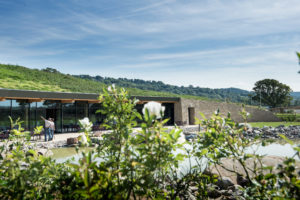What can we do to help communities become resilient in the face of austerity? NOW’s Director, Roger Higman reports from a recent study tour of Gloucester.
How can communities build resilience in austere times? This may seem an odd question to pose as politicians tell us austerity is over and the Government moots a post-Brexit spending spree. But spending money wisely in the good times is key to building resilience when times are hard. And many communities throughout the UK are still suffering.
So, it seemed timely to take a visit to see what we can achieve through a new and innovative community approach.
To be honest, I didn’t feel I knew much about Gloucester. All I could recall was a cathedral whose cloisters appeared in the Harry Potter films, a famous rugby club and a tailor from Beatrix Potter. A day trip a few years back had suggested to me that it was quite run down – at least compared to nearby Cheltenham.
Gloucester has a proud engineering history. But over time, industries have declined. Average incomes are now lower than other parts of the South West. Many are dependent on Universal Credit, and budgets for social care have been cut.
In that, Gloucester is not unusual. But what happened next is!
It all started in the good times – in the 1990’s. Mark Gale, now Chair of the Gloucestershire Gateway Trust, had supported communities in social housing estates for over fifteen years. He noticed that there had been two attempts to build a motorway service area alongside the M5 which runs past Gloucester. Both had fallen through after opposition from local residents. He wondered how the problems of the community could become assets.
Mark became convinced that if the community could build the service area they could use its revenue to pay for projects in the city. And that the benefits of this might persuade residents to accept it. His colleagues were not impressed. Communities had developed property in the past, but none had attempted to build a motorway service area!
Twenty five years later, Gloucester Services is now a reality. The land was purchased. Government rules changed. Planning permission was obtained. A legal challenge by competitors was fought off. And a partner was selected (the Westmorland family) to run the services in the way the community wanted.
400 jobs were created, most going to people who lived nearby. Each year half a million pounds passes to the Gloucestershire Gateway Trust, the charity set up by the community. That’s between two and three pence from every pound spent at the services. £300,000 of that income goes to paying off loans but £200,000 is available to support local projects every year.
The beneficiaries include:
- Play Gloucestershire, which aims to transform children’s lives using the power of play
- The Venture, a local play facility
- Matson Library which is now run by the community
- Matson Gateway, a pay-what-you-can community cafe and information centre
- Together in Matson
- and All Pulling Together in Stonehouse.
It’s an outstanding achievement, but that’s not all. Next, Gloucestershire Gateway Trust and Westmorland plan to build a hotel to generate extra revenue for the local communities.
I went away with my mind buzzing. As an environmental campaigner in the 1990s, I’d seen motorways as blots on the landscape. As infrastructures that increase our dependence on carbon-intensive lifestyles. How strange that someone else had seen them as a potential asset. And how inspiring that they had the vision to find a way of using that asset for the public good!
What shone through in Gloucester was a real sense of pride. And a shared commitment to community development. To build on the assets already held by the community rather than focusing on the problems it faces.
So if you’re travelling up the M5, stop off and enjoy the facilities. They have a very different feel to your typical motorway services. A feel that you might like, from the local art on the walls to the local food in the shops. And some of the money you spend will go to support good causes in the communities you’re passing through.

